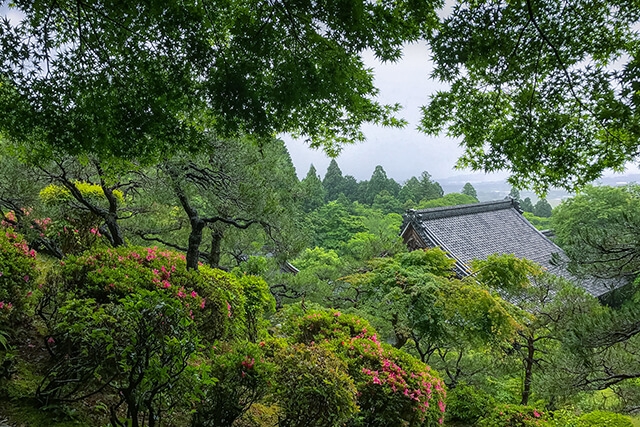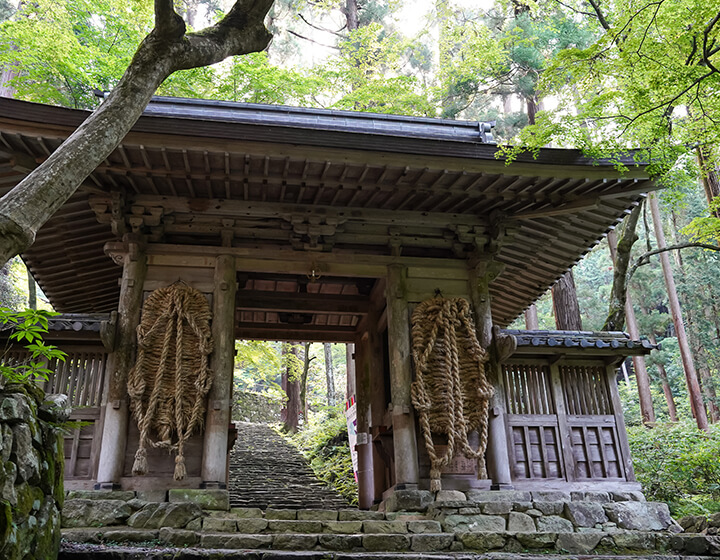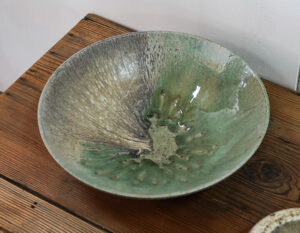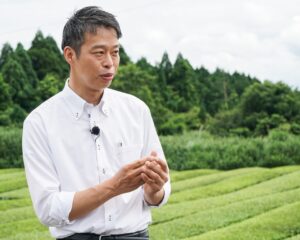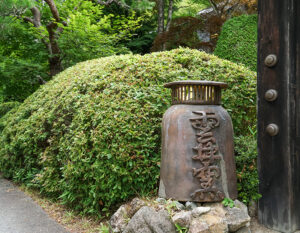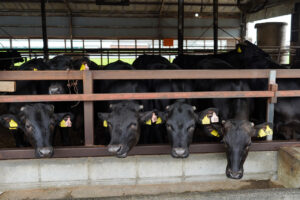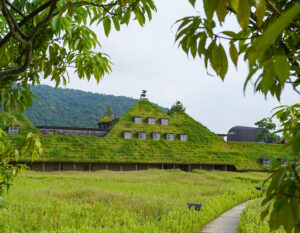Hyakusaiji Temple, selected as one of the 100 best places in Japan for autumn foliage and known as one of the best autumn foliage spots in Shiga, is one of the oldest temples in Shiga, founded by Prince Shotoku. Outside of the fall foliage season, it is an atmospheric old temple surrounded by tranquility, and is said to have been praised as “heaven on earth” by the Portuguese missionary Luis Frois.
A power spot where you can feel the breath of nature
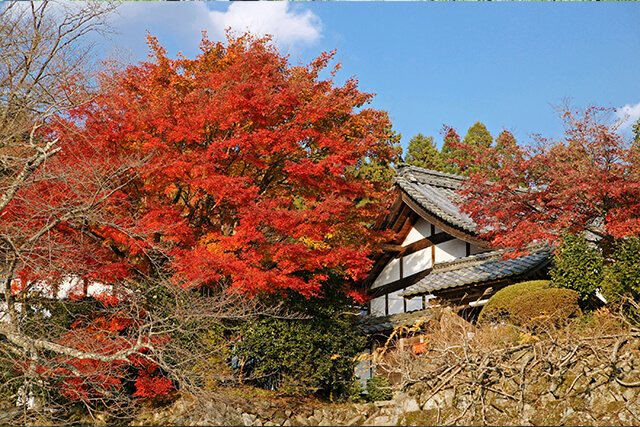
Hyakusaiji Temple is a temple of the Tendai sect of Buddhism located in the Koto area on the east side of Lake Biwa. Together with nearby Saimyoji Temple and Kongorinji Temple, it is known collectively as the ” Koto Sanzan” (three mountains of Koto ), and is crowded with many tourists who enjoy the autumn leaves in autumn.
Located deep in the mountains in the middle of the Suzuka mountain range, the temple grounds cover an area of 83 hectares, with approximately 5,000 deciduous trees and 25,000 evergreen trees growing wild. The temple is also known as ” Hyakusai-dera (Temple of a Hundred Colors )” because of the variety of plants that adorn the temple from season to season, including fresh greenery, autumn leaves, and snowy landscapes.
One of the oldest temples in Omi Province
Hyakusai-ji Temple is said to have been built by Prince Shotoku more than 1,400 years ago during the Asuka period (710-794) in imitation of “Ryuun-ji Temple” in Baekje Province for the Baekje people (Kudarabito) who came from the Korean Peninsula. It is one of the oldest temples in Shiga, which has many historic temples. After the Tendai sect was established on Mt. Hiei during the Heian period (794-1185), it became a temple of the Tendai sect and prospered through the Muromachi period (1333-1573).
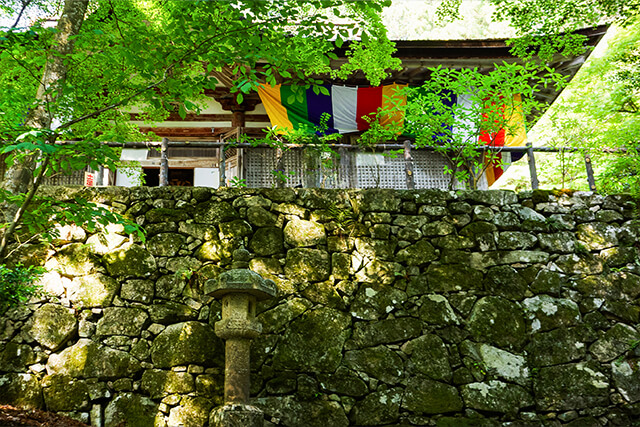
Longing for the country of Baekje beyond the setting sun
Baekje Temple is located on the 35th parallel of north latitude, and Baekje Province was 880 km away to the west via Mount Hiei and Mount Kurama. It is said that many visitors remembered their homeland beyond the setting sun from the Baekje Temple.
Heaven on Earth” that fascinated Nobunaga and Luis Frois

It is also known as a historical stage for famous figures. It is said that Nobunaga Oda, a great leader of the Warring States period, was so fascinated by this temple that he decided to make it his only imperial temple during his lifetime. The missionary Luis Frois, who was visiting Japan from Portugal at the time , praised the temple as “Heaven on Earth, 1,000 monks” and said it was such a splendid temple. Later, however, Hyakusai-ji Temple was judged to have been used to hide Rokkaku’s army, which was hostile to Nobunaga, and the temple was burned down by Nobunaga.
In the Edo period (1603-1867), the Tokugawa Shogunate and the Hikone Clan donated funds to rebuild the main hall, Niomon Gate, and Sanmon Gate (Red Gate), which still remain today.
A “famous garden with a distant view of the world” where the historical stage of Omi can be seen from all over the country.
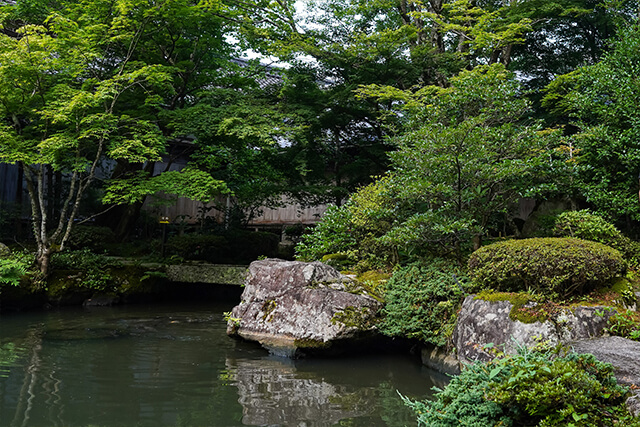
About 400 meters up the approach from the Hyakusai-ji Temple gate is the “Honbo Kikenin,” a large pond-viewing garden named ” Famous Garden of the Distant View from Above” facing the Shoin.
The garden is built with a combination of various huge rocks with the Suzuka Mountains in the background, and a mountain stream flows from the mountain into the pond where the carp swim.
The garden continues toward the mountain, and from the viewing platform at the top of the garden, one can see Mount Hiei, the historical stage of Omi, and the Koto Plain.
Mysterious space created by moss-covered rocks
Around the garden, huge moss-covered rocks remain in their original state. Around the temple, massive stone walls and stone steps remain as they were when the temple was built, giving it the appearance of a mountain castle, and it has been used as a filming location for many historical movies and TV dramas.
Just standing in this mysterious space where nature and history are in harmony seems to heal and purify the mind.
The main hall, Niomon gate, and temple gate are just a few of the highlights of the temple.

The main hall of Hyakusai-ji Temple houses a 3.2-meter tall statue of the eleven-faced Avalokitesvara Bodhisattva, one of the largest existing in the Nara period. It is one of the largest existing wooden Buddhas of the Nara period. It is also called “Ueki-Kannon” (meaning “Goddess of Mercy”), because it is said that Prince Shotoku found a sacred cedar tree in the mountains that emitted light and carved the tree while it was still standing. When the main hall of the temple was burned down by Nobunaga, the monks carried the tree 8 km deep into the mountains and escaped the disaster.
Akamon (red gate), the entrance to Hyakusai-ji Temple
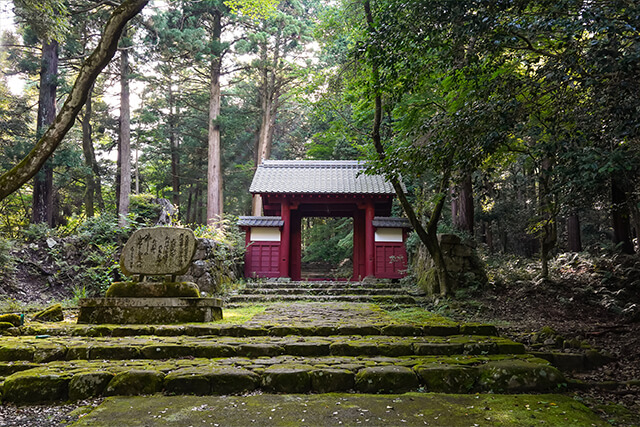
The vermilion-lacquered gate at the entrance to the temple grounds is commonly called ” Akamon (red gate). The contrast between the green of the fresh greenery and the orange of the autumn leaves makes it a beautiful spot for photographs. There is only a temporary parking space here, so if you are visiting by car, be careful not to drive past the gate.
It is said that touching the large straw sandals (about 3 meters long) displayed at the Niomon gate will bring good luck for physical health and longevity without illness. It is said that Hiroyuki Itsuki, the Naoki Prize-winning author of “Hyakudera Pilgrimage,” also touched the straw sandals to pray for the fulfillment of his wish to visit Hyakudera.
Bodaiju tree in full bloom in summer
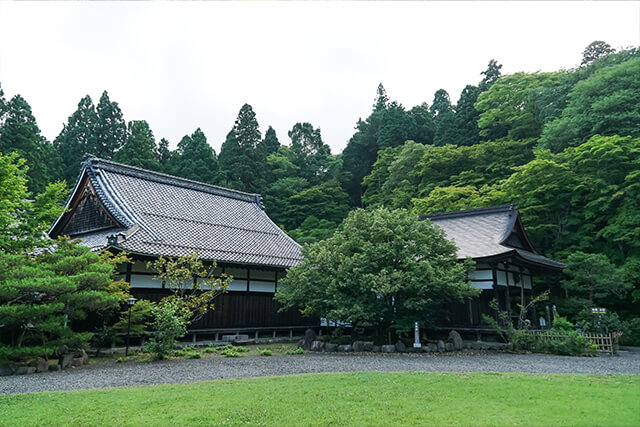
The south garden stretches from the gate to the front gate. In summer, the lovely flowers of the linden tree are in full bloom, and an elegant fragrance wafts through the air. The flowers are the offspring of a 1,000-year-old linden tree that grows beside the main hall. The fragrance of the flowers attracts bees and other small insects, which gather to feed on the nectar and make their wings sing. The fragrance of the flowers is a reminder of the small life that lives in this area.
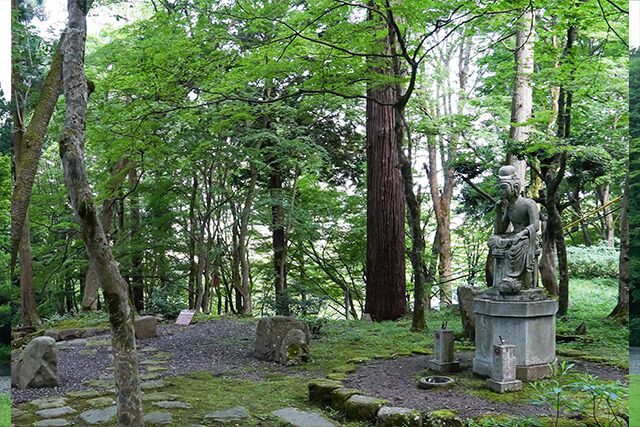
In addition, there are a variety of other spots within the temple precincts, such as the 430-year-old Kannon cedar tree, Benten-do Hall, and the approach with its moss-covered stone walls, all of which have remained unchanged for 1,400 years.
While the autumn foliage season when the entire mountain is dyed bright red is a good time to visit, the morning precincts are quiet and the sunset over Lake Biwa is a sight to behold, so enjoy not only the autumn leaves but also the “hundred colors” of the temple.
